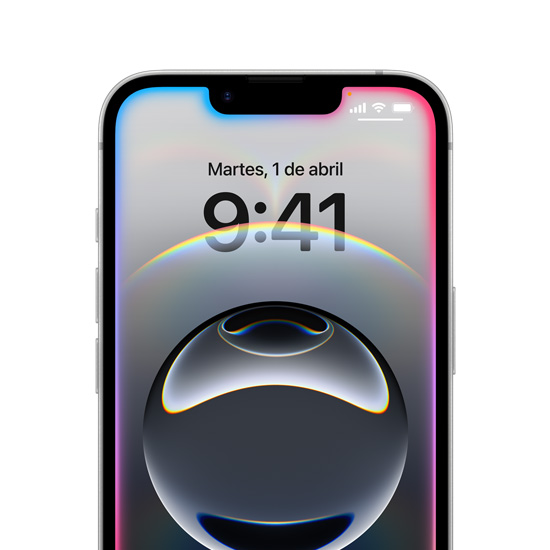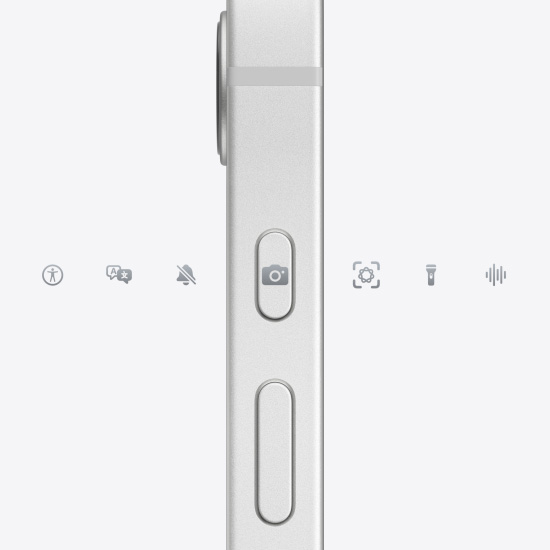The iPhone 16e is Apple’s new entry-level model in the 2025 lineup, designed for users who want the Apple ecosystem without the premium price tag. With Apple Intelligence integration, a long-lasting battery, and the new A18 chip, the 16e delivers many core iPhone experiences at a lower cost. But as with any “budget” iPhone, compromises are part of the story.
Design and Build — Minimalist Looks, Durable Shell
The 16e features a clean, understated look with just one rear camera, matte black or white color options, and black aluminum frames. The Ceramic Shield front (previous generation) and aerospace-grade aluminum offer good durability, though not the latest protection tech.
We found the phone surprisingly light in hand, especially compared to Pro models. The lack of a second or third camera lens contributes to the sleek feel, and the large bezels stand out more against modern edge-to-edge trends.
Pros
Lightweight and comfortable
Minimal, attractive rear design
Durable aluminum and glass materials
Cons
Thicker bezels than current iPhones
Outdated Ceramic Shield version
Performance and Features — Powered by A18, Trimmed for Simplicity

The iPhone 16e runs on Apple’s new A18 chip with a 6-core CPU and 4-core GPU. While this is a slightly downscaled version of the A18 in other iPhones, we didn’t notice major performance issues during testing. Everyday tasks, Apple Intelligence features, and even gaming with hardware ray tracing worked smoothly.
It lacks a few “Pro” features: no Dynamic Island, no 120Hz refresh rate (ProMotion), no always-on display. The screen is still a 6.1-inch OLED Super Retina XDR, but brightness is capped at 800 nits (1,200 HDR peak), noticeably lower than the mainline iPhone 16.
Pros
Smooth performance from A18 chip
Apple Intelligence support
Visual Intelligence and Action Button included
Cons
No ProMotion or Dynamic Island
Slight GPU downgrade from other iPhone 16 models
We also reviewed: Motorola Edge 50 Ultra Review: A Bold Take on Ultra Smartphones
Battery and Charging — Long Life, Old Standards
Battery life is one of the 16e’s best features. With up to 26 hours of video playback, it outlasts many pricier models. This is partially thanks to the power-efficient A18 chip and the new C1 modem, which seems to offer more consistent cellular performance with less battery drain.
Charging, however, lags behind. The 16e supports only 7.5W wireless charging and lacks MagSafe and Qi2 compatibility. Wired charging is limited to USB 2 speeds (480 Mbps) even though it uses a USB-C port.
Pros
Excellent battery life
Consistent 5G performance with new C1 chip
Cons
No MagSafe or Qi2
Slow wireless and wired charging
User Experience — Familiar iOS, Thoughtful Enhancements
Running iOS 18, the 16e provides the full iPhone experience including all system apps, Face ID, and access to Apple Intelligence features. Tools like Image Playground, Genmoji, and the Visual Intelligence mode work as advertised, despite the phone’s more modest hardware.

The Action Button is a highlight, letting you trigger shortcuts, open the camera, or launch Visual Intelligence instantly. While it lacks some advanced camera software features (like Cinematic Mode or Action Mode), we found the 48MP camera to be more than sufficient for everyday photos and videos.
Pros
Smooth iOS experience
Useful Action Button integration
Full Apple Intelligence support
Cons
Older photo features and no Cinematic Mode
Still uses a notch (no Dynamic Island)
Reasonable Trade-Off for the Right User
The iPhone 16e is a smartly balanced device for users who want the latest software features and great battery life without the high cost of flagship models. Its biggest strength is longevity: it runs the latest Apple chip, supports Apple Intelligence, and should receive updates for years.
That said, the trade-offs are real: slower charging, one rear camera, no high-refresh display. For those upgrading from an iPhone 11 or SE, the 16e offers meaningful improvements in performance and efficiency at a reasonable price point.
Read next: Our hands-on with the Samsung Galaxy A54 5G – The Best Mid-Range Upgrade Yet?
Technical Specifications
| Feature | Details |
| Dimensions | 146.7 x 71.5 x 7.80 mm |
| Weight | 167 g |
| Display | 6.1″ OLED Super Retina XDR, 2532 x 1170 |
| Chip | A18 with 6-core CPU, 4-core GPU |
| Rear Camera | 48MP Fusion, 2x telephoto (digital crop) |
| Front Camera | 12MP, autofocus, Photonic Engine |
| Battery Life | Up to 26 hrs video, 90 hrs audio playback |
| Charging | USB-C (20W fast), 7.5W Qi (no MagSafe) |
| Wireless | Wi-Fi 6, 5G, Bluetooth 5.3, eSIM |
| Water/Dust Resistance | IP68 (up to 6m for 30 min) |
| Storage Options | 128GB, 256GB, 512GB |
| OS | iOS 18 |
Alternatives
- Google Pixel 8a: Budget-friendly performance with superior camera. Features 64MP main sensor and 13MP ultrawide lens. 6.1″ OLED display, Android 15, and seven years of updates. Tensor G3 chip delivers solid AI performance.
- OnePlus 13R: High-end specs at mid-range price. Snapdragon 8 Gen 3 processor, 120Hz OLED display, and massive 6,000mAh battery with fast charging. OxygenOS 15 optimized for multitasking and gaming.
- Google Pixel 9: Perfect for iPhone switchers. Clean interface, seven years of support, and Tensor G4 chip. 50MP and 48MP ultrawide cameras. Sharp, bright 6.3″ OLED display.
